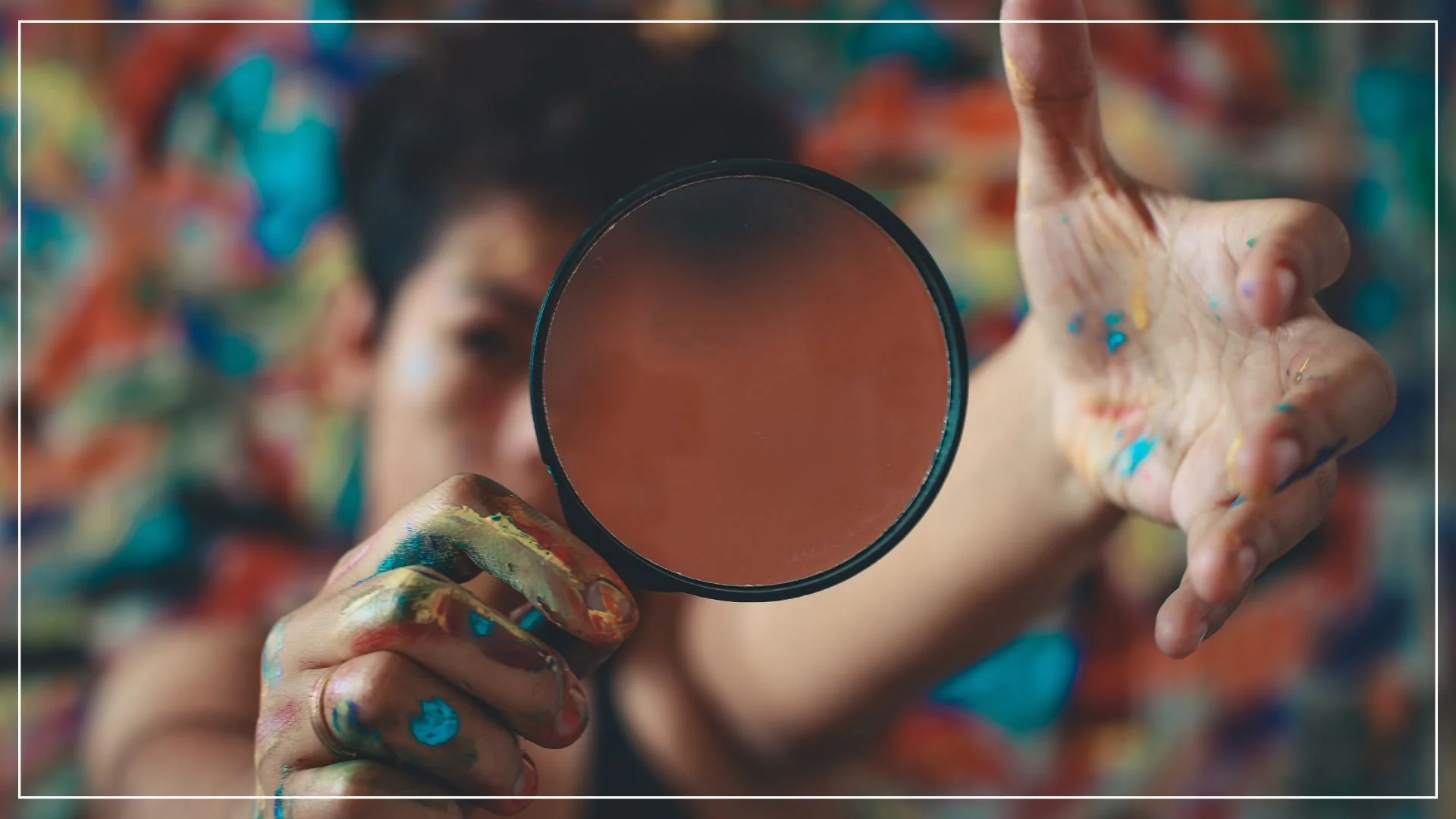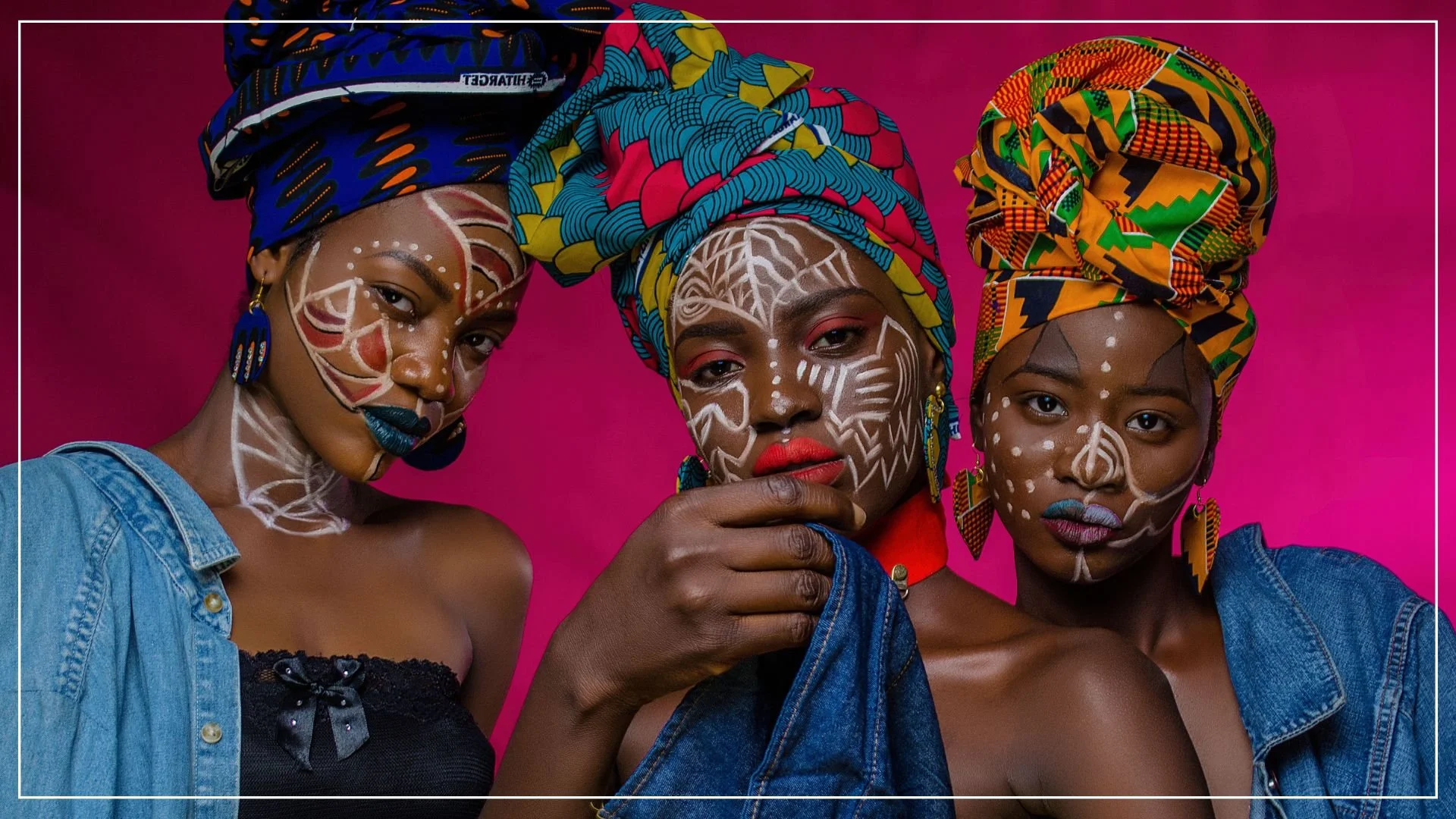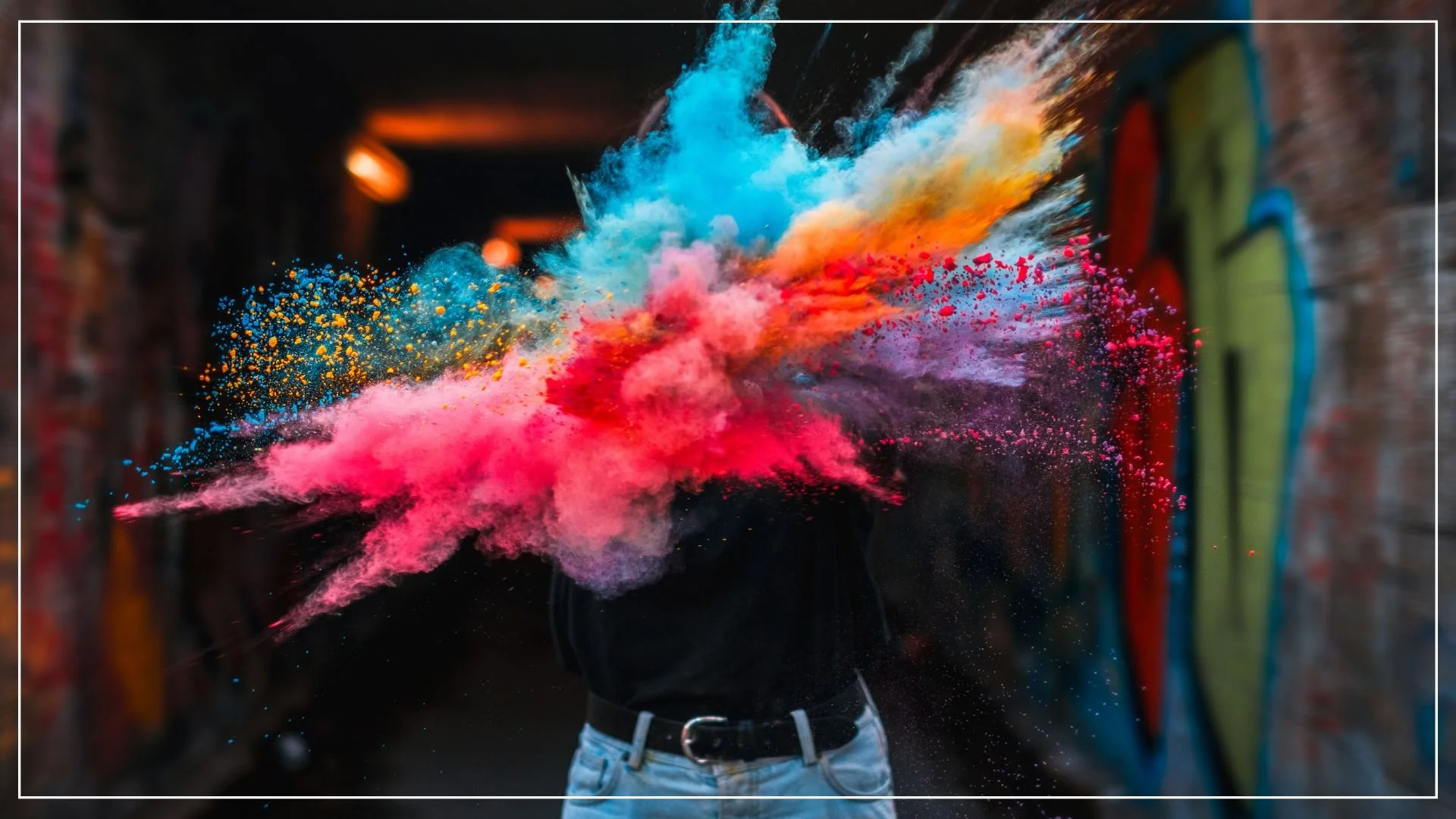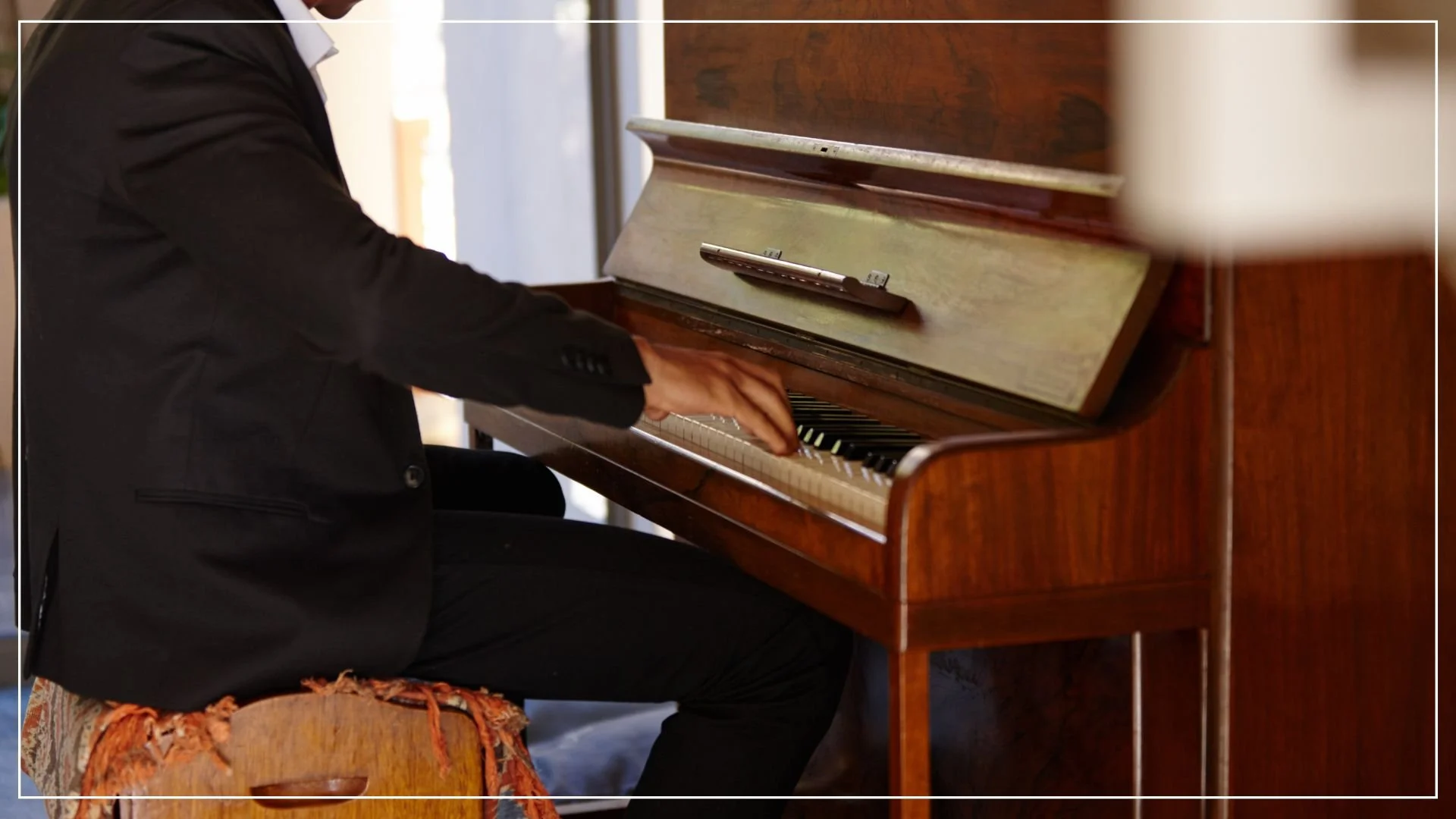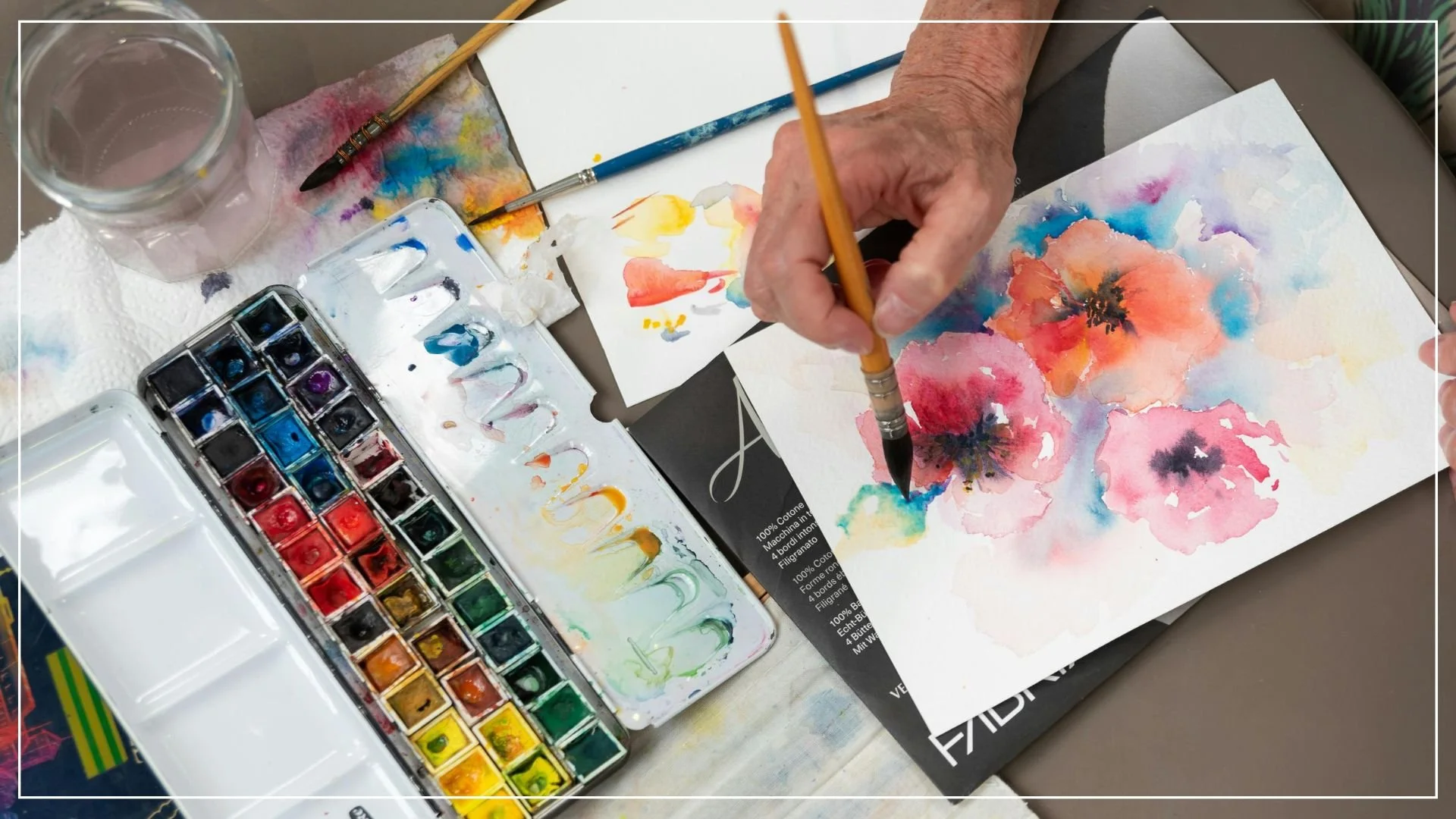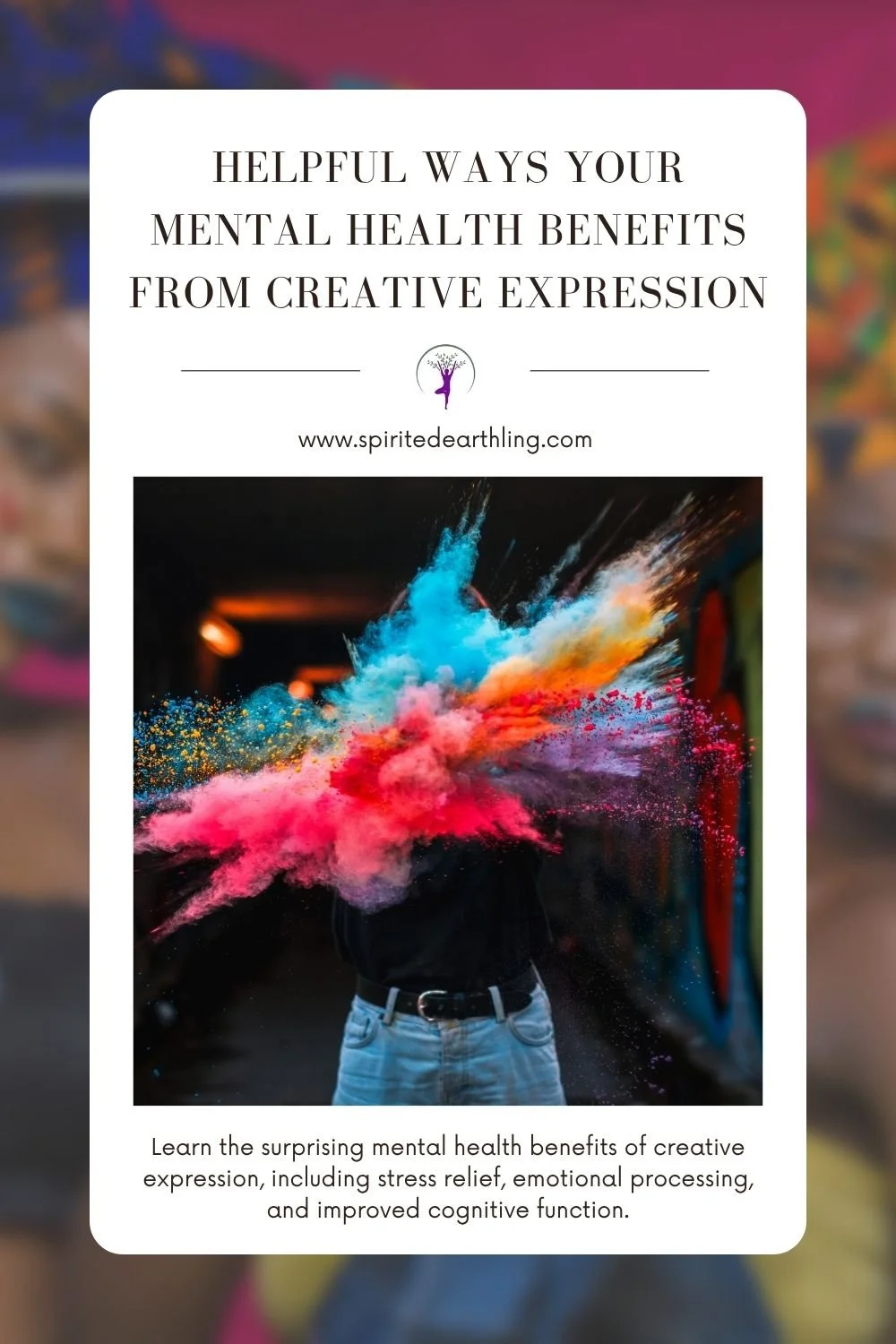Helpful Ways Your Mental Health Benefits from Creative Expression
Learn the surprising mental health benefits of creative expression, including stress relief, emotional processing, and improved cognitive function.
Creativity and creative expression are often thought of as masterpieces hanging in art galleries, symphonies in grand halls, and fashion designers with loud or unconventional dress sense. And while these are of course incredible forms of expression, it also includes colouring in, humming a tune, knitting a scarf, scribbling in a journal, trying different combinations in the kitchen, or even dancing freely in your living room. In a time of constant notifications and competing demands, creative expression offers a refuge for the mind.
Whether through paint, prose, or pottery, creativity invites you to try and reconnect with yourself. And there are very real benefits of creative expression for your mental health.
“Art washes away from the soul the dust of everyday life.” ~ Pablo Picasso
Why Creativity Works Wonders for Your Mental Health
Have you ever lost track of time while sketching, singing along to your favourite playlist, or tinkering with a half‑finished craft project? This flow offers several mental health benefits, including (but not limited to):
Creativity is a natural stress reliever
Life can feel like a whirlwind of deadlines and responsibilities. Couple this with constant stimulation, and it’s easy to feel overwhelmed and perpetually stressed. Creative activities become the moments you need to catch your breath - slowing down your heart rate, softening your tense muscles, and regulating your breathing. These activities need absolutely no formal training or proficiency to have this effect. Flow states increase your dopamine levels (feel-good hormone) and lower your cortisol levels (stress hormone). This kind of creative release naturally supports good mental health.
Practical tip: Have a creative kit (sketchpad, coloured pencils, crochet hooks and knitting needles with some yarn – whatever your interest is, or what you want to try) next to the couch for something to do instead of doom-scrolling. Another idea is to have it at your desk for micro-sessions (5-10 minutes) between tasks for restorative pauses throughout your day.
“Art enables us to find ourselves and lose ourselves at the same time.” ~ Thomas Merton
Creativity helps with emotional processing and release
Emotions (especially complex ones like grief or anxiety) can be difficult to express verbally. Creative mediums can bypass these linguistic bottlenecks by allowing feelings to be expressed in colour, movement, or melody. Art provides a non-verbal language for our deepest emotions. And this goes a long way in helping you feel more grounded and calm.
Abstract art or free‑form journalling externalises internal storms, giving you a tangible reference point. Once feelings are on the page, they are easier to examine with compassion rather than judgement.
Listening to or creating music can channel emotions and help you process them. Where some people find running clears the mind best, others may find a powerful drumbeat helps release anger, a melancholic melody helps express sadness, or an upbeat strum helps show joy.
Dance, yoga sequences, and somatic movement help release tension in the body. These movement meditations can feel like you’re ‘moving through’ an emotion, acknowledging it and then releasing it.
Practical tip: Create a three-song playlist (or queue the songs): the first to capture how you feel, the second to lift your spirit, and the third a soothing instrumental. Move, doodle, or write throughout the three songs.
“Art speaks where words are unable to explain.” ~ Pam Holland
Creativity strengthens cognitive function
Creative practices exercise the brain much like a gym strengthens muscles. When you're creating, you're constantly making choices – what colour to use, what word to choose, or what movement to make next. This process strengthens your neural pathways, improves your ability to think flexibly, and even enhances your memory. It encourages ‘out of the box’ thinking (a skill that's incredibly valuable in all aspects of life). Trying new things and learning new skills can habituate you to meet challenges with curiosity rather than anxiety, and accustom you to being okay with being a beginner and not the smartest person in the room. This mental resilience and stability helps promote healthier mental states.
Practical tip: Choose a medium that feels slightly unfamiliar. If you’re a writer, try watercolours; if you’re a dancer, try haiku; if you’re a musician, try knitting. A beginner’s mind keeps neural pathways nimble.
“If you hear a voice within you say “you cannot paint,” then by all means paint, and that voice will be silenced.” ~ Vincent Van Gogh
Creativity lifts your mood and self-esteem
The sense of satisfaction that comes from creating something (no matter how big, excellent, or usable) reinforces the belief that you can create and complete things. Finishing a painting, completing a piece of writing, or even successfully learning a new chord on a guitar can provide a significant boost to your mood and self-esteem. It's a tangible representation of your capabilities and efforts. The creative journey also normalises mistakes as part of refinement, helping perfectionists embrace process-oriented mindsets. In these ways, creativity can help you feel more mentally refreshed and balanced.
Practical tip: Take on tiny projects that can be completed in an hour – a poem, a collage, a crochet flower, a batch of colourful biscuits.
“Expressive art therapy integrates all of the arts in a safe, non-judgmental setting to facilitate personal growth and healing.” ~ Natalie Rogers
Creativity can connect you with community
Creative activities can be deeply personal and a chance for connection. Joining a choir, attending a pottery class, participating in a writing group, or even just sharing your creations online can lead to new friendships, shared experiences, and a sense of belonging. Social connection is an essential part of good mental health, combating feelings of isolation and loneliness.
Practical tip: Join a local workshop, local meet-up, or online challenge (e.g., #Inktober or a 30‑day song‑writing prompt).
“Art is the most effective mode of communications that exists.” ~ John Dewey
Creativity offers personal insights and spiritual connection
For many, creative expression moves beyond the material or outcome. For some, the act of creation is like a dialogue with your inner self (discovering preferences and interests or even underlying thoughts and feelings you weren't consciously aware of). Because of this, some find the creative process can be a connection to the divine (however you define it). The rhythm of brushstrokes or knitting needles becomes like a moving meditation, anchoring your awareness in the now. In other ways, imagery and lyrical metaphors can connect personal stories to collective narratives, reminding us of our interconnectedness.
Practical tip: Before beginning, set a gentle intention, like: May whatever emerges today guide me towards clarity. Light a candle, breathe deeply, and allow the act to become ritual.
“Art is the highest expression of the human spirit.” ~ Pablo Picasso
The Kaleidoscope of Creative Expression
Creative expression is beautiful in its diversity, with there being something for everyone:
1. The Visual Arts (Drawing, Painting, Sculpture, Photography, Collage): This is often what first springs to mind when talking about creative expression. From simple doodling in a notebook to intricate oil paintings, the visual arts offer a tangible way to express yourself. A pencil and paper and your phone camera are a brilliant starting point (you don’t need expensive supplies or tools). Have fun experimenting with colours, textures, and forms. And keep your focus on the process of creating, not being perfect.
2. Music (Playing an Instrument, Singing, Songwriting, Listening Actively): Music has a unique power to move us. Whether you're learning to play the guitar, singing in the shower, joining a local choir, or even just actively listening to music that resonates with you, its therapeutic benefits are immense. It can regulate mood, evoke memories, and sometimes provide a powerful emotional release. Don't underestimate the joy of simply making noise and finding your rhythm.
3. Crafts and Design (Knitting, Crocheting, Sewing, Pottery, Jewellery Making, Woodworking, Fashion Design, Interior Design): Creating something with your own hands can be incredibly rewarding. Additionally, crafting and design often involve repetitive motions, which can be wonderfully meditative and calming. And as your skill level improves, the focus required for intricate patterns or precise cuts can help quiet a busy mind, bringing you firmly into the now. Creative expression can extend to your personal fashion style and the way you decorate your home.
4. Writing (Journaling, Poetry, Short Stories, Blog Posts, Letters): Words are powerful and writing provides an unparalleled outlet for self-reflection and emotional processing. Journaling, in particular, can be a fantastic tool for organising thoughts, expressing feelings, and gaining clarity. The Artists Way encourages writing morning pages for this exact thing. Poetry allows for abstract expression, while stories can transport you and help you explore different perspectives. As you’re writing, don't worry about grammar or spelling. Just let the words flow.
5. Movement and Performing Arts (Yoga, Tai Chi, Free Movement, Dancing, Acting, Theatre): Our bodies are incredible vessels for expression. Yoga and Tai Chi combine movement with breathwork and mindfulness, offering a holistic approach to well-being. Dancing, whether it's a structured class or simply moving freely to music in your living room, can be incredibly liberating and joyful. Similarly, stepping into a character or performing on stage offers a powerful outlet for emotional expression and connection. Movement allows you to release tension, connect with your physical self, and express emotions both verbally and non-verbally.
6. Culinary Arts (Cooking, Baking, Food Styling): Even preparing and serving food can be a deeply creative and therapeutic act. The process of selecting ingredients, experimenting with flavours, and creating a delicious meal can be incredibly mindful and satisfying. The sensory experience (the aromas, the textures, the tastes) engages multiple senses and can be a wonderful way to connect with yourself and others.
7. Gardening and Horticulture: Connecting with nature and nurturing life can be profoundly therapeutic. The act of planting, tending, and harvesting can be a meditative and grounding experience. Witnessing growth and beauty, even in a small potted plant, can foster a sense of hope and accomplishment.
Keep in mind, these 7 ways of expressing creativity are just some of many. Creative expression can also be seen in innovative technologies and business ideas, problem-solving in any context, and looking at something differently in academic research.
“Through art, we can communicate our thoughts and feelings in a way that transcends language.”
Embracing Your Inner Creator
Starting this journey is easier than you might think.
Pick your playground: List different mediums that spark intrigue, not obligation. Choose 1-3 of them to try. You don't need to invest in expensive materials or sign up for an intensive course right away. Pick up a pen and paper, find some old magazines for a collage, or simply put on some music and dance. Just begin.
Find your rhythm: Make time for it, just as you would for exercise or self-care activities. Even 15-20 minutes a few times a week can make a difference. Perhaps every Tuesday evening or ten minutes each morning.
Create a creative space: A corner with good lighting and a tidy tray of materials can call to you to create. A side table with a box of creative supplies can invite you to engage without prompting. Having everything readily available makes it easier to jump in when inspiration strikes.
Track the ripple effect: Keep a 'mood log' for a month, noting stress levels before and after creative activity. Notice any patterns that support this habit. Remind yourself that the goal isn't a masterpiece or symphonic sounds. The goal is just to express. To let go of the pressure to be perfect. To produce something worthy of widespread acclaim. The process is what’s important, not the product.
Reflect and persist: Check in with yourself and look back on your growth – were you able to silence your inner critic, allow yourself to be a beginner, experiment and explore with different forms of creative expression? There will be days of inspired joys and uninspired frustration. This is normal. Keep showing up and reap the good mental health benefits.
Recommended read: 20 Cheerful and Charming Affirmations for Unlimited Creativity
Learning to be Open to Creative Expression
There can be different limiting beliefs about your creative talents or available time. As you learn to be more open to creative expression, you will overcome these barriers. For each limiting belief, reframe it, and take according actions:
I’m not talented —> creativity is a skill, not an innate gift —> treat your first attempts as that – first attempts, remind yourself that improvement follows practice
I don’t have time —> micro-activity counts —> pair creativity with everyday/routine tasks (e.g., doodle during phone calls, colour in while drinking your evening tea, knit while watching TV), add creative appointments to your calendar
Art materials are expensive —> creativity thrives on limitation —> repurpose scrap paper, use pressure for different pencil shades to colour in, work with different spice combinations in your kitchen
I feel guilty prioritising time for myself —> self-care supports your ability to support others —> have everyone in the family doing a creative activity at the same time (sharing the importance of it), schedule in time for yourself
“Creativity is allowing yourself to make mistakes. art is knowing which ones to keep.” ~ Scott Adams
This is Your Invitation to Create
Creativity isn’t something isolated to lofty studios or professionals. It isn’t a luxury for the wealthy. It isn’t for those with abundant free time. No, creativity is a birthright we all inherited. It’s a way to nourish your mind and nurture your spirit. Creative expression becomes a way to manage stress, process emotions, strengthen problem-solving and resilience. So, grant yourself permission to play and accept this invitation to create.
Don't let fear or perceived lack of talent hold you back. The next time your mind feels cluttered, reach for a pen or paintbrush. The next time your feelings are overwhelming, learn a new chord and strum for fun. Begin, even badly. Celebrate your smudged lines and off-key notes as evidence you're showing up for yourself. The next time you feel restless, move your body in a flow or to a rhythm. When you honour your creative expression, you honour your mental health and wholesome personal growth.
You are a creator by design, and your mental health deserves the incredible gift of your unique expression.
What creative activity are you most excited to try or revisit? Share your thoughts in the comments below, let's inspire each other on this wonderful journey of growth and well-being.
Affirmation: My creative journey is about the process, not the product, enriching my mind and nurturing my spirit.
To-Do: Set up a small ‘creative corner’ or gather a mini-kit of materials that call to you, ready for your next moment of inspiration.
Journal Prompt: What limiting belief about my creativity might be holding you back? How can I reframe it to embrace a beginner's mindset?
Connect with Spirited Earthling on your favourite social platforms and say hello 🌻
Resources for mind, body, and soul growth available in the Shop🌿
